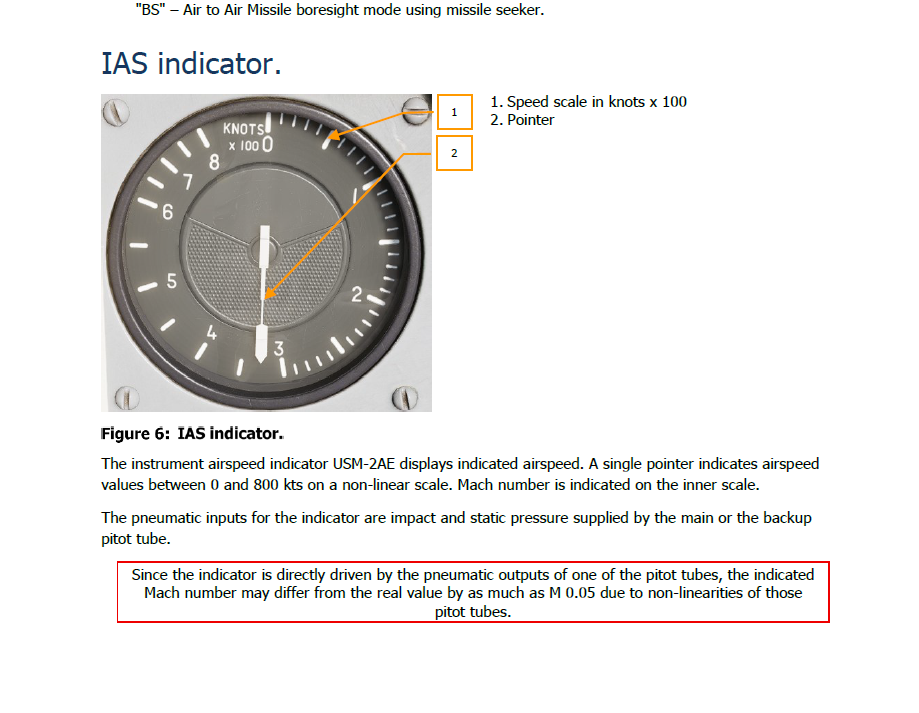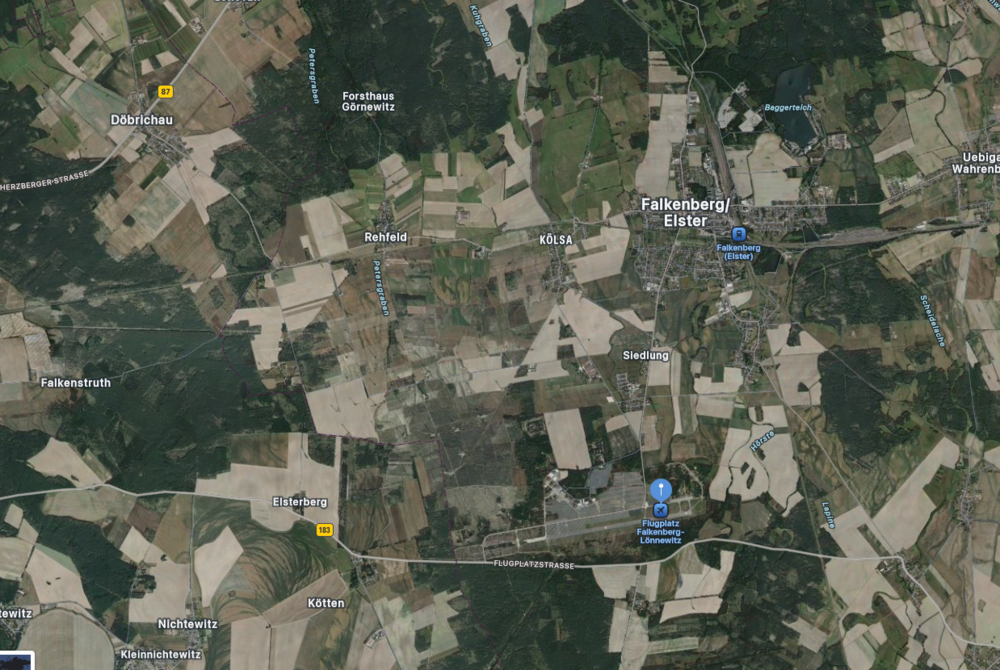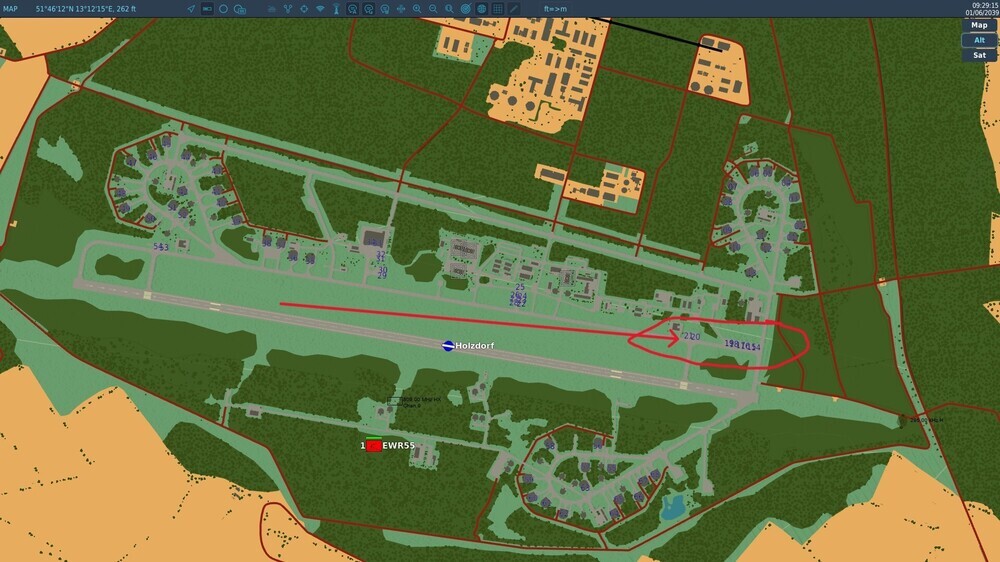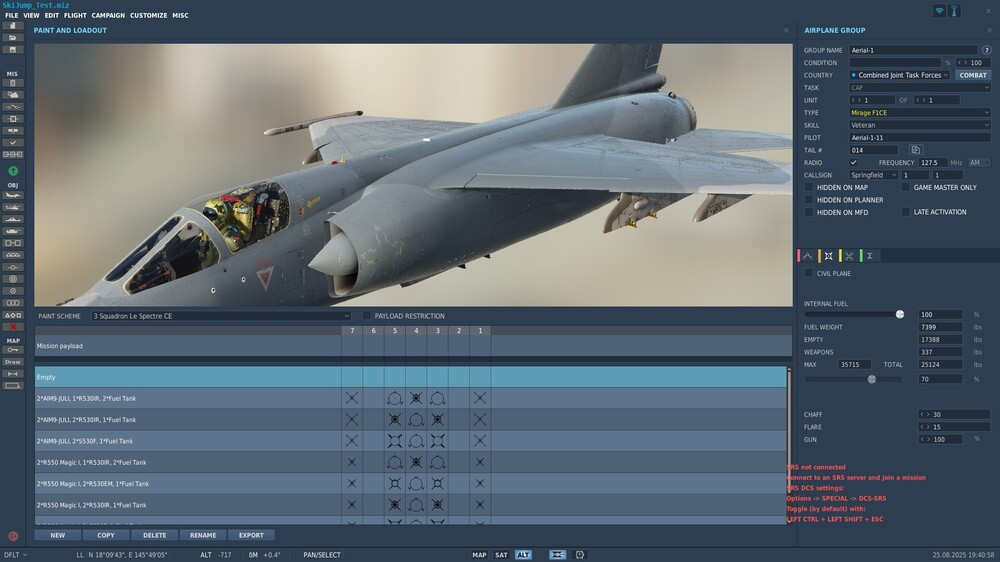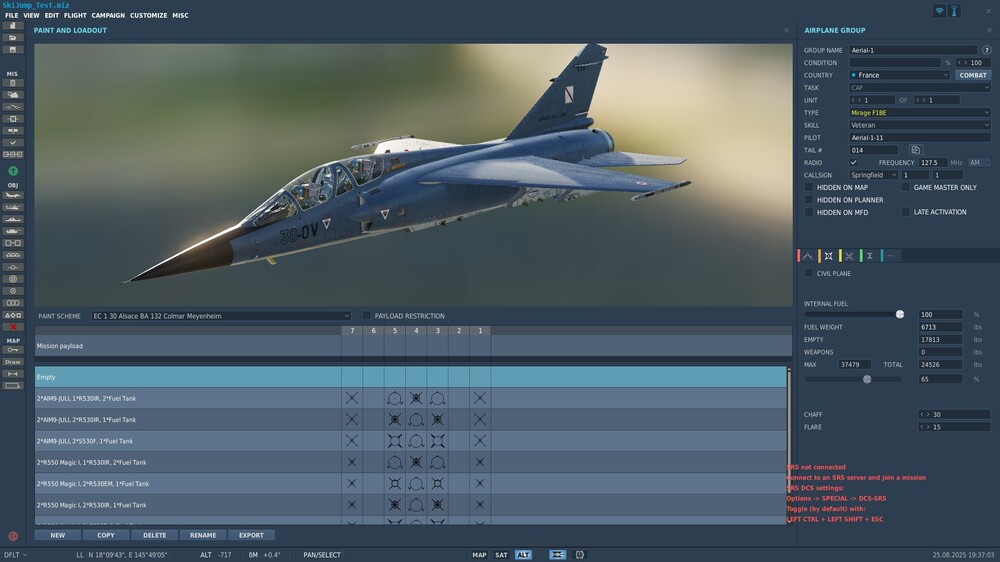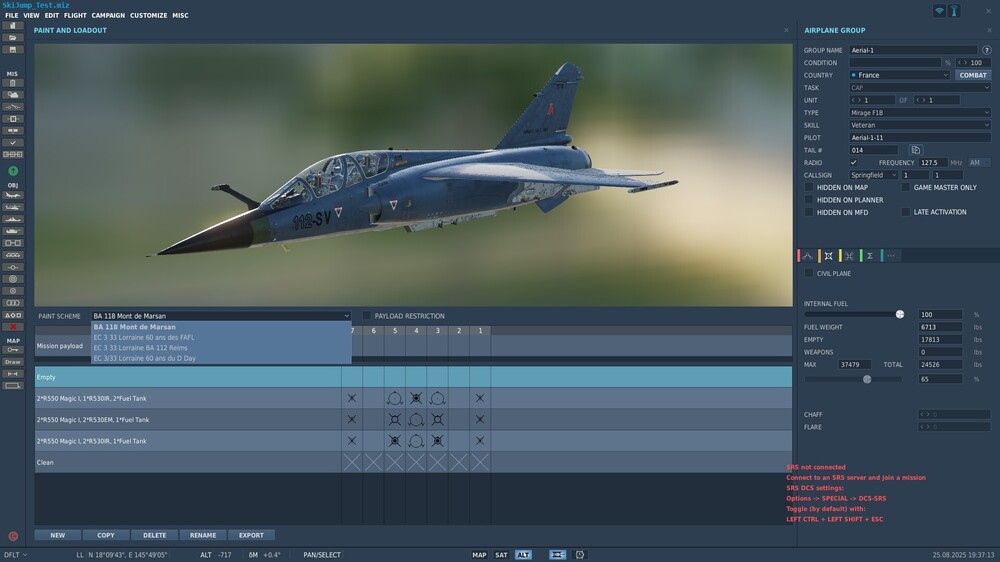-
Posts
2107 -
Joined
-
Last visited
Content Type
Profiles
Forums
Events
Everything posted by Bremspropeller
-
Most european F-16s would have been A models, apart from some USAFE early C models in the mid to mid-late 80s (say 84 to 88 timeframe). Modernisation ramped up slowly on both sides and WarPac (non GSSD) 29s only came online in 88/89, so just shortly before the Iron Curtain fell. GSSD 29s also slowly replaced 23s and 25s, right up 'till 89 (Zerbst getting 29s in '88, Altenburg recieving Fulcrums in mid'89).
-

Most Efficient BVR climb and Highest performance Speeds
Bremspropeller replied to AeriaGloria's topic in DCS: MiG-29A Fulcrum
The jet has no range. "Going high" will stretch any jet's range by a good margin. The Mirage F1 has about similar internal fuel to the MiG-29 and will outrange it without effort. No worries there, as it splits that fuel by half the number of engines. Being 150 miles from base at low altitude is a non-issue with the F1. With the 29, you better get your butt up to high altitude for the cruise part, or diverting because of weather can be an issue. Now, if you're doing severe-clear warthunder stuff, that won't bother you, as you won't divert ever. If you're dialling up the realism a bit, then factors beyond turning every kilogram of fuel in your tank into noise will start playing a role. -
Is that with pitot heat engaged?
-

Air Speed Indicator / Machmeter in English cockpit
Bremspropeller replied to Bremspropeller's topic in Bugs and Problems
The MACH Indication on the ASI should be congruent with the ASI needle and the value shown should be the same as on the TAS indicator. It isnt. The Mach window is in a completely unrelated place and there is no indication of the current Mach number. This is a bug. @NineLine 0:38 ff (though grainy) shows correct behaviour, with the Mach window around the ASI needle. There's several other instances in the video showing correct ASI behaviour. -

Air Speed Indicator / Machmeter in English cockpit
Bremspropeller replied to Bremspropeller's topic in Bugs and Problems
You're both not anserwing the question, though. The inner scale on the ASI is supposed to indicate a Mach number. There is a mach number shown in the upper right quadrant of the ASI, but the shown number has no pointer and 330KIAS at 29000ft is not Mach 0.7 It's not correct as is @NineLine -

What can't we release Cold War Germany Phase 2 without?
Bremspropeller replied to MAESTR0's topic in Wish List
Another 29 airfield would be Falkenberg, just south of Holzdorf (LSK airfield) and East of Torgau on the Elbe river: Though I believe it was a MiG-29S base, it would be better than nothing. Plus it sounds cool - "Falkenberg" (literally Falcon Mountain). A fitting name for a place with MiG-29 ops - which, of course people were forseeing in the 13th century, when the place first turned up in historical records. null -
And the APU-exhaust through the tank at 1:38 It's also there at other instances (e.g. 0:58), but most prominent at 1:38.
-

What can't we release Cold War Germany Phase 2 without?
Bremspropeller replied to MAESTR0's topic in Wish List
With the 29 out, LSK's JG 3 "Wladimir Komarow" now needs a home for the new jet (and the older Fishbeds)! Sadly, Preschen is only in Phase 3's scope. On the last picture, the nose is pointing to the airfield. The Autobahn A15 is just to the right (east) of the jet and farther right is the Oder River, which is the border to Poland. Note that the Autobahn served as auxiliary airfield and was connected to the main airfield by a taxiway. -
The inner markers are scary tall - certainly at Holzdorf! With three reds on the PAPI you can almost reach out an touch the antenna. Yes, the grass strip and aux strip are working fine in the 29
-
Nah, just a depressing neighbourhood.
-
You're bringing up an interesting point here: Grass ops (9mins into the video). LSK used to do night grass runway ops as well - for their higher-qualified pilots. If those lighting trucks would be placeable objects, we could do that as well. ...and probaly scare ourselves enough to never try it again... ================================================ I assume the ops at 1:33 in the video are on the aux runway just next to the NE shelter-roundelle? null
-
I figure this is the FC3 Fulcrum's hood, but while there's an absence of the FF's own section, here's a wild thought: Anybody willing to do the original MiG-29UB scheme for the FF 29A of NVA's LSK? I've always hated the LSK scheme for the 29A and the UB's scheme looks so much more fighter-like... https://file1.hpage.com/007813/51/html/nva1.html 179 and 29+23 are the same airframe: https://www.airfighters.com/photo/262247/M/Germany-Air-Force/Mikoyan-Gurevich-MiG-29GT-9-51/29-23/ https://www.airfighters.com/photo/100412/M/Germany-Air-Force/Mikoyan-Gurevich-MiG-29GT-9-51/29-23/ https://www.airfighters.com/photo/30542/M/Germany-Air-Force/Mikoyan-Gurevich-MiG-29GT-9-51/29-23/ https://www.airfighters.com/photo/12410/M/Germany-Air-Force/Mikoyan-Gurevich-MiG-29GT-9-51/29-23/ https://www.planepictures.net/v3/show_en.php?id=1265272 29+25 used to be 185. https://www.airfighters.com/photo/168844/M/Germany-Air-Force/Mikoyan-Gurevich-MiG-29GT-9-51/29-25/ 181 became 29+24. The only missing jet above is 148 (later 29+22), as it was in lizard camo as well. Looks like there's both a standard grey-green, as well as an off-standard grey-grey variation. Edit: Looking more closely, both colours are always applied and all three jets have the same camo in very different stages of weathering.
-

What can't we release Cold War Germany Phase 2 without?
Bremspropeller replied to MAESTR0's topic in Wish List
I think the cases for Wittmund, Jever and the Schleswig-Holstein airfields are well warranted. I also think, there should be more bavarian airfields. The easiest to include would be Neuburg, which is just south of the current Phase 3 scope boundary. Neuburg is (was) an F-104G(AWX), F-4F and Eurofighter base (JG 74, formerly known as "Mölders" before the fun police had a say in things). There are several F-104G and Tornado bases a good deal south of the Phase 3 scope, so making them would increase the detailed map aread by quite a lot. Same with G 91R bases, even though Leipheim could be warranted by including Neuburg, as it's also just south of the current Phase 3 scope. I also think there's some benefit in making airfields in less detailed areas at the border regions of the map. This could give us a larger number of french, polish and czech airfields. -
Interesting to see the ACMI pod on the outboard wing station on a CR. The one on the tip station is a Magic training store, which would also be a nice touch.
-
Not sure if this is still an issue for you, but the rheostat is on the center console on the pilot's side.
-

Proposal for FULLY MODELLED FLYABLE aircraft
Bremspropeller replied to Didier Jules's topic in DCS Core Wish List
Alpha Jet E as a mod is in the works by SplitAir, who have a great track record with their mods.- 2 replies
-
- 1
-

-
- alpha jet b 🇧🇪
- alpha jet a 🇩🇪
- (and 8 more)
-
It also looks rather stupid without a radar.
-

Fuel totalizer wheel BE, landing gear auto-setting
Bremspropeller replied to Bremspropeller's topic in Bugs and Problems
Stick auto firing-safeties are also affected by this in the BE -
Is there a function to slave the seeker onto a radar-lock as well?
-
It's a structural limitation on the A/B, but I'd have to look at my A/B/C/D Dash One from a later period, when the A had the -19 engine upgrade. If you're extrapolating the chart, you can see that at 17klbs at SL, she could just about maintain 7g. The C/D was strengthened an for sure had a 7.33g limit. So did the following models.
-

Fuel totalizer wheel BE, landing gear auto-setting
Bremspropeller replied to Bremspropeller's topic in Bugs and Problems
-

Missing texture SAAF skin "Spectre" on the CE
Bremspropeller replied to Bremspropeller's topic in Bugs and Problems
-

Mirage F1B/BE missing livery, wrong number
Bremspropeller replied to grim_reaper68's topic in Bugs and Problems
The B for EC 1/30 Alsace is not appearing for me either when using "France" as country. Going "combined...." only adds the Draken skin. -

Cold and dark, cold weather : Alarm C.AERO
Bremspropeller replied to gillouf1's topic in Bugs and Problems
I've had that before as well. Make sure you're putting the Anemo-switch on, as soon as you're started up, so it can start removing the ice. Seems like DCS wants to ice up your probes on startup really quick or it doesn't account for your probes being guarded. I have taken off with unreliable airspeed (same message) and the probe heater burned through the ice during climb. We were flying with a Mirage 2000 in the formation and he crashed on take-off, most probably because his probe was iced up as well and hence his FBW got all confused...




